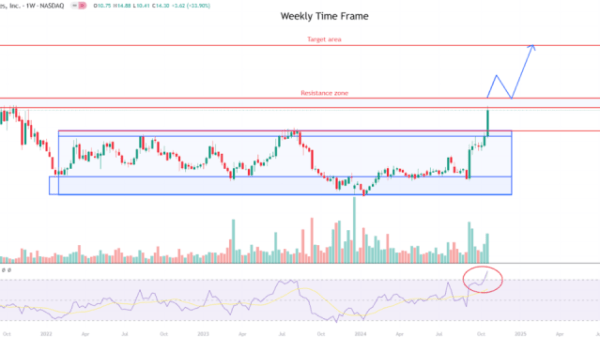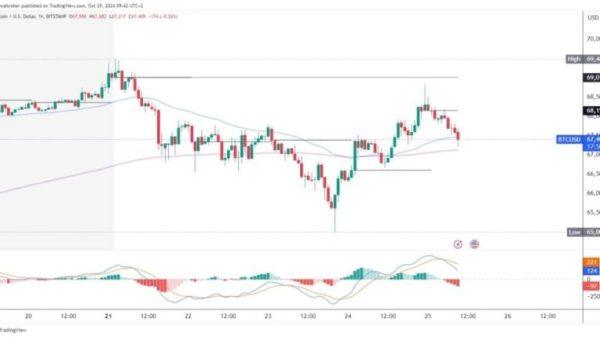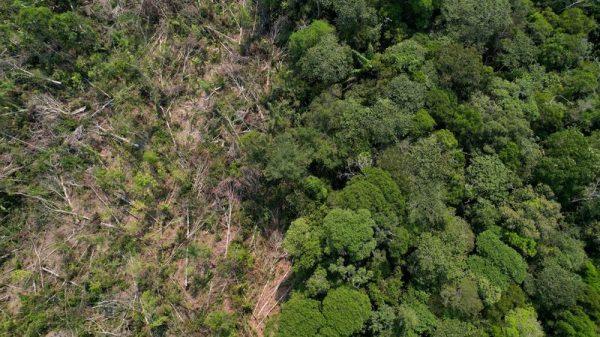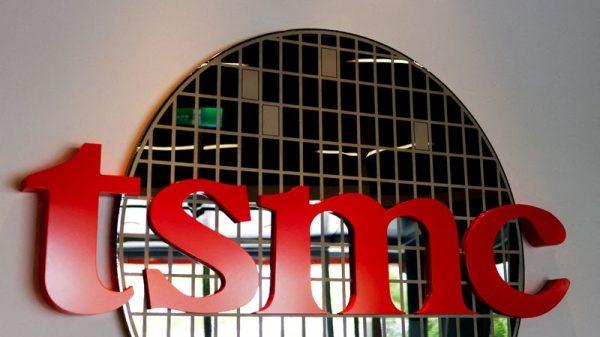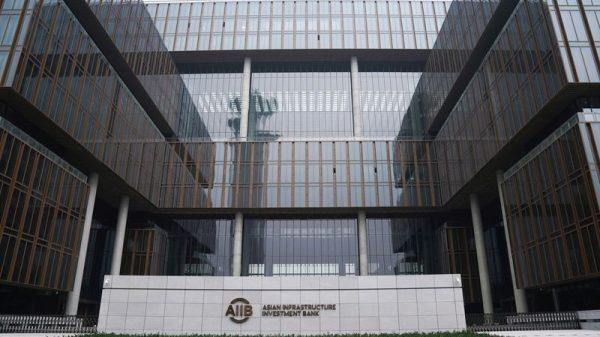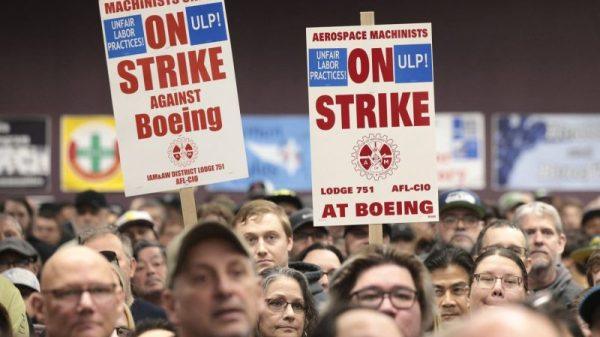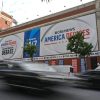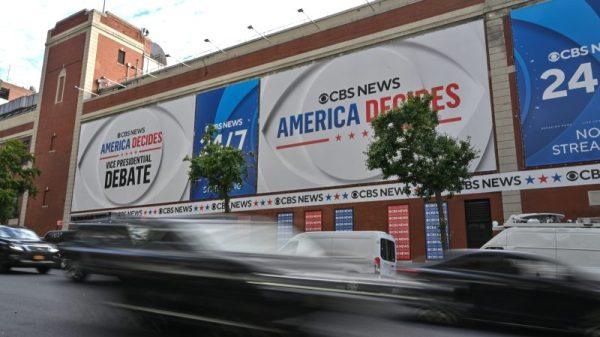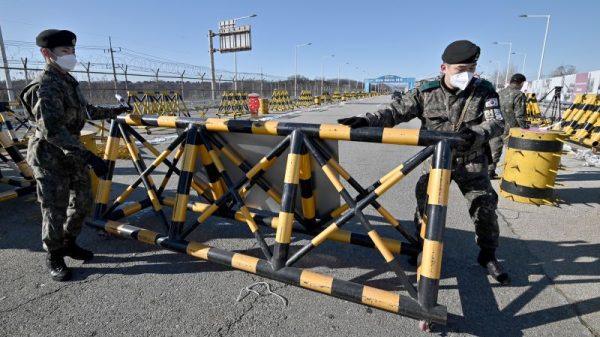Olin Corporation (NYSE: NYSE:OLN) has demonstrated resilience in its third-quarter 2024 results despite the significant operational disruptions caused by Hurricane Beryl. The company’s earnings call, led by key executives, revealed a $110 million impact on EBITDA from the hurricane, with a projected additional $25 million impact expected in the fourth quarter. Nevertheless, the chemicals segment outperformed expectations, generating $110 million and surpassing the forecasted $100 million. Caustic soda prices saw a substantial increase, while Winchester’s commercial ammunition sales experienced a downturn. Olin Corporation ended the quarter with a strong financial position, holding $225.9 million in cash and around $1 billion in liquidity.
Key Takeaways
Hurricane Beryl caused significant operational disruptions, resulting in a $110 million impact on Q3 EBITDA.
Chemicals segment performance exceeded expectations, generating $110 million.
Demand for chlor alkali products increased, with caustic soda prices rising by 30%.
Winchester’s commercial ammunition sales declined, with retailers reducing inventory.
Strong financial standing with $225.9 million in cash and approximately $1 billion in liquidity at the end of Q3.
Q4 EBITDA is projected to be between $170 million and $200 million, reflecting seasonal weakness and hurricane effects.
Investor Day scheduled for December 12, 2024, to discuss strategic goals and financial performance.
Company Outlook
Olin Corporation anticipates a challenging Q4 with a projected EBITDA impact of $25 million from Hurricane Beryl.
No annual guidance for 2025 has been provided due to market unpredictability.
The company remains cautiously optimistic about potential demand improvements correlating with interest rate cuts in housing and industrial markets.
Bearish Highlights
Winchester’s Q3 EBITDA fell by $20 million due to declining volumes.
Operational challenges from Hurricane Beryl are expected to persist until mid-2024.
Bullish Highlights
Chlorine pricing stability and firming caustic pricing expected to continue.
A $200 per ton epoxy price increase announced for early Q4 shows early traction.
Plans to review the portfolio for growth opportunities at the upcoming Investor Day.
Misses
Winchester’s commercial ammunition sales fell short of expectations.
Hurricane Beryl’s impact was more significant than anticipated, with a total full-year EBITDA impact projected at $135 million.
Q&A Highlights
The decline in PCI was primarily due to Hurricane Beryl’s impact, with Q4 performance expected to be flat compared to Q2.
Share buybacks in Q4 are expected to be in line with those in Q3, adjusted for the recent earnings outlook.
During the call, President and CEO Ken Lane discussed the company’s strategic goals, including a focus on portfolio strategy and the management team’s experience. He emphasized the importance of resetting long-term financial targets and expressed optimism about the company’s future. Lane also noted that the company would remain disciplined in cost management and focus on value over volume in the face of market challenges. The upcoming Investor Day in December is expected to provide further insights into the company’s strategic direction, including chlorine capacity and partnerships with Dow, as well as growth opportunities.
InvestingPro Insights
Olin Corporation’s recent performance, as highlighted in the earnings call, can be further contextualized with data from InvestingPro. Despite the significant operational disruptions caused by Hurricane Beryl, Olin maintains a strong financial foundation. The company’s market capitalization stands at $4.83 billion, reflecting its substantial presence in the chemicals industry.
InvestingPro data reveals that Olin’s P/E ratio is 17.74, suggesting a moderate valuation relative to its earnings. This is particularly noteworthy given the recent challenges faced by the company. Additionally, Olin boasts a dividend yield of 1.78%, with its last ex-dividend date on August 8, 2024. This aligns with an InvestingPro Tip indicating that Olin “has maintained dividend payments for 51 consecutive years,” demonstrating a long-standing commitment to shareholder returns.
Another relevant InvestingPro Tip states that “management has been aggressively buying back shares.” This strategy, combined with the dividend policy, supports the company’s focus on creating shareholder value, even in the face of operational challenges like those caused by Hurricane Beryl.
The company’s revenue for the last twelve months as of Q2 2024 was $6.57 billion, with a revenue growth of -16.32% over the same period. This decline in revenue is consistent with the challenges mentioned in the earnings call, particularly in the Winchester segment and the impact of the hurricane.
It’s worth noting that InvestingPro offers 11 additional tips for Olin Corporation, providing investors with a more comprehensive analysis of the company’s financial health and market position. These insights can be particularly valuable as Olin navigates the aftermath of Hurricane Beryl and prepares for its upcoming Investor Day.
Full transcript – Olin Corp (OLN) Q3 2024:
Operator: Good morning. And welcome to Olin Corporation’s Third Quarter 2024 Earnings Conference Call. All participants will be in listen-only mode [Operator Instructions]. Please note this event is being recorded. I would now like to turn the conference over to Steve Keenan, Olin’s Director of Investor Relations. Please go ahead, Steve.
Steve Keenan: Thank you, operator. Good morning, everyone. And we appreciate you joining us today to review Olin’s third quarter results. Before we begin, I’ll remind you that this discussion, together with the associated slides and question-and-answer session that follows, will include statements regarding estimates or expectations of future performance. Please note these are forward-looking statements and that Olin’s actual results could differ materially from those projected. Some of the factors that could cause actual results to differ from our projections are described without limitations in the Risk Factors section of our most recent Form 10-K and in yesterday’s third quarter earnings press release. A copy of today’s transcript and slides will be available on our Web site in the Investors section under Past Events. Our earnings press release and other financial data and information are available under press releases. With me this morning are Ken Lane, Olin’s President and CEO; and Todd Slater, Olin’s CFO. We’ll start with our prepared remarks, then we look forward to taking your questions. I’ll now turn the call over to Ken Lane.
Ken Lane: Thanks, Steve. And good morning, everyone. Olin’s third quarter was significantly impacted by operational disruptions as a result of hurricane Beryl damage. I want to thank our team at the Freeport site for their efforts to restart our assets, which were shut down in early July due to the hurricane. Multiple plants are now returning to normal operations. The Olin team worked through the difficult time safely and expeditiously while facing hurricane related challenges at home and in their communities. Now turning to our third quarter results on Slide 3. The quarter unfolded slightly better than expected for our chemicals businesses, excluding the impact of Hurricane Beryl, which came in at $110 million versus our initial estimate of $100 million during the quarter. We will have some residual hurricane impact in the fourth quarter due to additional downtime and the completion of some less critical infrastructure repairs. Excluding the impacts from Hurricane Beryl, chlor alkali products achieved a solid quarter with sequential improvement. The aftermath of recent hurricanes also drove third quarter demand for bleach and hydrochloric acid higher in support of water treatment and cleaning end uses. During the third quarter, caustic prices increased supported by some demand improvement in export markets as well as continued constraints in supply related to global industry planned and unplanned outages. Epoxy prices and margins continue to slowly improve, though volumes remain weak. We remain focused on delivering cost reductions during a very challenging market environment. Our third quarter epoxy resin volumes were sequentially lower as we started our planned start at Germany turnaround. Third quarter Winchester commercial ammunition volume fell significantly short of our expectations. Due to softness in consumer demand at our customers’ retail outlets, retailers are now slowing their purchases to normalize inventories by year end. This headwind is partially offset by continued strength in defense demand. Turning to Slide 4. Let’s take a closer look at our chlor alkali and vinyls business. With Hurricane Beryl behind us, our Freeport plants are returning to normal operations. Caustic soda is a strong side of the ECU. And with global industry supplies constrained, Olin will stay focused on our value first commercial model to meet demand. Caustic soda demand continues to be strong with alumina and pulp and paper leading the way. South American demand has been the most robust with two recent world scale pulp and paper plant startups. Index pricing for US Gulf Coast caustic exports finished the third quarter up by over $100 sequentially, a 30% improvement over the second quarter index. North American merchant chlorine demand remains steady with positive trade press outlooks for vinyls and titanium dioxide heading into 2025. We expect agricultural related consumption to pick up seasonally late in fourth quarter. Chlorine into water treatment is expected to slow seasonally and pick up again during the first quarter. Our EDC participation remains disciplined. EDC values are up slightly year-over-year in line with PVC, but we remain diligent to keep our EDC position value driven. For a look at our epoxy business, let’s turn to Slide 5. During the third quarter, we began our planned Stade, Germany outage, which occurs once every six years and is proceeding on plan and budget for completion in the fourth quarter. As the largest and only integrated producer of epoxy in the European Union, Stade remains an important asset for Olin and that value is expected to increase as we realize contractual cost savings in 2026. Despite improving margins, resin and formulated solution volumes remain challenged in both the US and Europe. The inflow of China subsidized epoxy continues unabated even with local production costs rising in Asia on tightening glycerin feedstocks. In September, the US International Trade Commission announced preliminary countervailing duties for epoxy imports, which only impacted China. We hope the US ITC’s upcoming November antidumping duties will level the playing field across Korea and Taiwan and appropriately value domestic production of these critical materials and stem the flow of unfairly subsidized Asian imports. In parallel, the European Union is also evaluating epoxy antidumping duties with preliminary determinations expected in mid-2025. I’ll now turn to Slide 6 for a Winchester review. Third quarter commercial ammunition demand was disappointing. Cautious of propellant shortages and hopeful for a strong second half demand, our retailers bought heavily during the first half of 2024. Now with consumer demand remaining stubbornly sluggish, retailers have pivoted to reducing inventory in advance of year end. We expect destocking to continue through the fourth quarter. Rising propellants and metal costs remained a headwind for our commercial ammunition business. Winchester recently announced ammunition price increases ranging from 5% to 10% to offset these rising costs. Our new White Flyer clay target business continues to exceed expectations and has been a welcome offset to weaker commercial ammunition sales. In contrast to the commercial business, Winchester’s military sales across all value chains, domestic, international and project based continue to show strength. Construction is now underway for the Army’s Lake City Next Generation Squad Weapon ammunition facility. This project, while fully funded by the US Army, will grow Winchester’s Lake City revenue base and expand our global defense participation. Our defense related revenue is expected to grow as a percentage of Winchester sales in the coming years. Now, I’ll hand it over to Todd for our financial highlights before I wrap up.
Todd Slater: Thanks, Ken. Continued macro challenges reinforce the importance of Olin’s investment grade balance sheet and our robust cash flow generation. This strong financial foundation enables Olin to continue running our disciplined value focused commercial model while also deploying a substantial portion of our cash flow towards share repurchases. Over the last four quarters, Olin has returned approximately 60% of our operating cash flow to shareholders through our quarterly dividends and share repurchases. Over that same time frame, we have repurchased 6% of our outstanding shares. We ended the third quarter with $225.9 million of cash and cash equivalents and approximately $1 billion of available liquidity. Our net debt has increased by approximately $164 million from year end, while decreasing approximately $65 million during the third quarter. After taking into consideration the impact of Hurricane Beryl, our quarter end net debt to adjusted EBITDA ratio was 2.7 times. We continue to make progress on our cash flow initiatives that we outlined in our last quarterly earnings call. Let me give you a brief update. During the third quarter, we generated approximately $108 million from liquidating a portion of our seasonal working capital build. We now expect working capital to be an approximately $20 million source of cash flow in 2024. We have taken additional steps to further reduce our annual capital spending, targeting approximately $200 million for 2024. As a reminder, we have successfully deferred our international tax payment of approximately $80 million into 2025. While we expect to reduce debt further in the fourth quarter, we believe that net debt at year end 2024 will be approximately $100 million higher than year end 2023. After giving effect to Hurricane Beryl, our year end net debt to adjusted EBITDA ratio is expected to be 2.6 times. Our teams continue to focus on cash generation, maintaining cost discipline and exploring additional cost savings opportunities. We are committed to a strong balance sheet with investment grade credit ratings while consistently returning cash to shareholders. I’ll turn the call back to Ken for a few additional comments before we begin our question-and-answer session. Ken?
Ken Lane: Thanks, Todd. Let’s turn to Slide 7 and our outlook for the fourth quarter. Overall, we expect to see a seasonally weaker fourth quarter. Also due to lingering operational issues at Freeport that extended into the first half of October, Hurricane Beryl will present an estimated additional impact of $25 million during the quarter, resulting in a full year impact of $135 million to our 2024 adjusted EBITDA. Including the hurricane Beryl impact, we expect our fourth quarter EBITDA to be in the range of $170 million to $200 million. Our investment grade balance sheet, strong liquidity and leading market positions continue to support our value first commercial strategy through this extended industrial trough. Our capital allocation strategy remains focused on returning cash to shareholders. Now on Slide 8, just a reminder, we will be hosting an Investor Day on Thursday, December 12th at the New York Stock Exchange. We truly hope you’ll be able to join us live whether in person or virtually to learn more about Olin and participate in our question-and-answer session. Our entire leadership team will be there to provide an in-depth review of our businesses, strategy and financial goals. Please mark your calendars. Operator, we’re now ready to take questions.
Operator: Thank you. We’ll now begin the question-and-answer session [Operator Instructions]. Our first question is from Duffy Fischer with Goldman Sachs.
Duffy Fischer: First question is just around the announcement that your competitor Shintech made back in August that they’re going to build a large integrated chlor vinyl project in the US. So I just wanted to get your sense on what you think that will do to the market. And also remind us, you’ve got a relationship with them where you supply them chlorine today, roughly what is the scale or scope of that? And do you think that will be impacted by this plant that they’re going to build?
Ken Lane: So we’ve known about this announcement going back over a year. As you know, the strongest growth segment for vinyls or for chlorine is vinyl. So it’s not surprising that you see companies like Shintech that are already in a leading position for PVC to be announcing growth plans. Obviously, we’re going to stay close to them in terms of what they’re doing. Yes, we’ve got a relationship but I don’t see that being a negative for our relationship. They want to continue to grow their business and ultimately, I think that’s part of their strategy. So it’s to be expected.
Duffy Fischer: And then if you would, maybe just give us a little preview of the Investor Day, what is it that you think investors will take away from that or what is it that you want to strategy wise kind of show to investors?
Ken Lane: Well, listen, I do think that it’s important. We’ve not done one of these for a few years, I think it’s five years since we had done it. So it’s going to be important for people to understand how we’re thinking about our portfolio. We’ve been doing a lot of work around that and we feel like we’ve got a very good portfolio of leading positions in all the businesses that we have. So just resetting some of the things around our financial targets longer term where we see the growth potential of the company, that’s going to be a really important part of the discussion. The other side of it is we’ve got a management team that has really experienced very strong team that I want you all to get to know better, that’s something that’s going to feature pretty prominently. You’re going to have an opportunity to hear from each one of the business leaders about how they see things for their businesses going forward. And I think that’s an important step in our evolution with a relatively new leadership team, but again, a very experienced team.
Operator: The next question is from Hassan Ahmed with Alembic Global.
Hassan Ahmed: A question around your Q4 guidance. I appreciate how you guys broke out the hurricane impact. So I mean, just the way I see it is the hurricane impact was $110 million worth of an EBITDA hit in Q3 and you’re guiding to a lingering $25 million sort of EBITDA hit in Q4, yet the uptick from Q3 to Q4 in EBITDA is $10 million to $40 million. So I’m just trying to understand that despite some of that EBITDA coming back on the back of sort of ramping up operations and the like. I mean, why is the EBITDA not going up more, is it exclusively because of seasonality?
Ken Lane: So I think that a big part of it, yes, is seasonality when you think about the chemicals business. So we’re talking about normal seasonality in a trough market, okay? So we’re not saying seasonality is any more than in a normal year but it’s in a market where we’re already seeing relatively weak demand. So there’s not anything abnormal to what we’re indicating for Q4 for the Chemicals business. I think what people have probably overlooked somewhat is around Winchester. Winchester is typically weakest in the fourth quarter and so what we saw in Q3 with our customers reducing their inventory at their retail outlets, that’s going to carry into Q4. They just did not see the recovery in demand and they were buying ahead of this even going back into Q4 last year, knowing this is an election year. And seeing some of the cost increases that were coming, they were buying pretty heavily ahead, expecting that demand to step up in the second half of the year. That just hasn’t materialized, and that hit us pretty hard in Q3. It’s not going to hit us quite as hard as Q4 but it’s coming down. And again, there is seasonality in Winchester as well. So I think that’s the part of the equation that’s probably not been picked up as much.
Hassan Ahmed: And I appreciate the fact that you guys have your December Analyst Day coming and I’m sure you would talk a bit about sort of ’25 and beyond then. But could you just give us just an early preview into how you’re thinking about 2025, just qualitatively? I mean, obviously, rates are coming down. Historically, you’ve talked about how you guys’ operating rates were in the 60s, the industry was operating probably in the ’80s. So from the sounds of it, if at all, there was a restocking you guys would be in a pole position to obviously gain market share and the like. So any sort of — beyond a seasonally weak Q4 that you’ve guided to, any sort of qualitative guidance you could give us about 2025 and beyond?
Ken Lane: When I think about 2025, I think the theme of uncertainty that we’ve seen in the back half of this year is going to continue into 2025. And as you know, we’ve said we’re no longer going to give annual guidance and the reason for that is because of the amount of uncertainty. It just creates a lot of issues in terms of crystal ball, which we don’t have. I do think that sitting here a year ago, if you listen to pretty much all industries, they were expecting the back half of this year to look better. Right now, I would say that next year, with the uncertainty that we have, probably is going to look pretty similar to this year from a market standpoint until we really see more aggressive cuts in interest rates. You’ve probably noticed here recently interest rates have actually ticked back up. So that’s just adding to the uncertainty in the environment. I’m not sure exactly where things are going to end up. Once we see housing come back then we’re going to start to see the demand come back. And until we see demand come back in housing and some of the other markets that are going to be driven by those lower rates and industrial activity following, I don’t think that you’re going to see that sort of spring unloading where we would see the benefit. So we’re anxiously awaiting to see when that’s going to happen. I still believe firmly that we will benefit from that. And we’re going to continue to be disciplined and focusing on volume at the value that we like in the marketplace, that’s not going to change. I think that’s more important now than ever. And so that’s how we’re going to play it going into next year.
Operator: The next question is from Arun Viswanathan with RBC Capital Markets.
Arun Viswanathan: I guess, I’ll just ask on some of your main end markets, what you’re seeing as far as supply demand, specifically for caustic soda. There was some disruptions late in or earlier maybe at a peer site and there was maybe some tightening. It looks like there’s been some stable demand. Have you seen any signs of potential pricing opportunities in caustic? And then similarly, maybe you could provide some comments on EDC and epoxy if anything?
Ken Lane: For caustic, we continue to see strength there. There have been a number of outages in the third quarter that carried into the fourth quarter that obviously is going to impact supply globally. It’s not just the outage that we had at Freeport. But with that, in terms of end use demand, the strong areas that we see really are in the export market. Export pricing has firmed up and increased significantly during the third quarter and that continued in the fourth quarter. Paper and — pulp and paper is continuing to be strong. There’s been some new capacity coming on in South America. We’ve also seen some strength in Southeast Asia. Alumina (OTC:AWCMY) continues to be a strength, there’s tightness in the aluminum market. So that’s adding support for caustic pricing. So in general, we feel good about where the caustic market is. And if you look, it has been steadily improving through the year. And as we see industrial activity improve next year, which we — again, going back to the answer we gave a minute ago with all the uncertainty that’s out there. As you see industrial activity improve that demand for caustic is going to continue to tighten or to give strength to pricing in the market. So we still feel good about the caustic market going forward.
Arun Viswanathan: And then if I could just ask a couple of follow-ups on that. So I guess when you think about Epoxy, it sounds like you’re expecting a date in November, where I get maybe an update on the antidumping situation. I guess, what are your expectations for that? And does that maybe drive some optimism about that business for ’25? And I guess when you think about that, if you were to add back some of your impacts, the 135. Is that the only driver that you really see adding back for ’25 or would there be some other potential uplift to ’25 EBITDA?
Ken Lane: Well, obviously, one of the uplifts is going to — we’re not planning on having another Hurricane Beryl, which is certainly a good thing. Yes, we are expecting the US government, the ITC to make an announcement here in early November. It’s the government, I don’t want to get too optimistic or too pessimistic. We’ve done all that we can to make the case that this is unfair trade that’s going on. And hopefully, you had a chance to take a look at the op ed that I had written a week or so ago, but we’re doing all that we can to support the case. We’ll see where the ITC ends up. We have been marginally successful throughout the year of steadily increasing pricing. However, I’ll tell you that it’s still in the face of a very strong volume that’s continuing to come in from Asia and that’s still very concerning. But hopefully, we’re going to get some favorable outcome here in early November. But it’s — right now, I can’t give you a guess whether it’s going to be positive or not.
Operator: The next question is from Jeff Zekauskas with JP Morgan.
Jeff Zekauskas: In 2024, did you come close to making any acquisitions of size?
Ken Lane: Jeff, we’re not going to comment on anything that may or may not have taken place. As you know, I’ve been here about six months and we’ve been spending a lot of time thinking about the future of the company and the strategy going forward. We’ve been pretty open that where we see opportunities for small bolt-on acquisitions that are highly accretive like what we had done with White Flyer, we see opportunities like that, we may take them. But our focus has really been on thinking about the future of the company and getting a physician coming out of this trough to show the performance of the company that we think we’ve got the potential for. But that’s all I can say about that for now.
Jeff Zekauskas: And in the chlor alkali business, in the third quarter, overall, did prices go up or down sequentially and by how much? And likewise, in Winchester, how much did prices go down sequentially?
Ken Lane: Jeff, so if you look at the PCI that we’ve got at the — in the appendix of the deck, you’ll see that, that trended down slightly. I’ll tell you that, that was really noise around mix in the portfolio related to Hurricane Beryl. So we’ve continued to see strength in caustic pricing and stability in chlorine pricing. It’s been a fairly — I’d say the market has developed in line with what we expected in the third quarter. And what we had indicated as our outlook for the third quarter. We think that pattern is going to continue into the fourth quarter, which is going to be stable chlorine pricing and firming caustic pricing.
Jeff Zekauskas: And at Winchester, how much did things fall?
Ken Lane: Winchester was volume related. It was not related to pricing. We’ve actually got a price increase that we’ve put out there for the beginning of the year, reflecting the continued higher cost base that we’re seeing related to metals and propellants. So we’re looking to recover some of that with the price increase that we put out there for January 1st.
Operator: The next question is from Aleksey Yefremov with KeyBanc.
Aleksey Yefremov: I wanted to come back to Shintech. Is it a realistic scenario where you need to replace them as a customer after 2030, I guess, or is it a pretty low probability scenario? And does the outcome of this depend on whether Shintech builds this new project or not?
Ken Lane: So it’s very — that’s five years from now, six years from now. We’ve got a lot of water to go under the bridge between now and then. We’ve said it before, we’ve got a very strong position in vinyls at our Freeport site, and we’re going to continue to look at options for the future of that based on what may develop. We’re not going to sit on our hands and not think through scenarios. But as of now, there’s nothing that I could say that would give me any — or give you any indication in terms of what may happen in 2030. It’s just too early.
Aleksey Yefremov: And then in epoxy, you were $200 per ton price increase. Can you tell us how successful it was so far and what do you expect from that in Q4 and Q1?
Ken Lane: So we announced that for October 1st and we are optimistic we are seeing some traction on that price increase in Q4. I mentioned it a minute ago, we’re still seeing the volume coming in from Asia. So I think some people are starting to maybe react a little bit to concerns around what may happen with tariffs. But we have seen some success in implementing that price increase. It’s really too early to say for the quarter. But I do think we’re going to see some price gains in epoxy resins in Q4. But it did not make up anywhere close to where we need to be to get back to a reasonable level of margin there.
Operator: The next question is from Josh Spector with UBS.
Josh Spector: I wanted to ask on the fourth quarter guide relative to what you delivered in first quarter in chlor alkali vinyls. If you exclude the hurricane impacts, it’s kind of similar, fourth quarter and first quarter are sometimes up, sometimes down. But I think if we look at the moving parts, caustic prices have moved higher. Your goal was to bring operating rates up, maybe that hasn’t happened to the hurricane or other pieces. But are there other factors that we should be considering why fourth quarter earnings would be lower kind of in the context that I [Technical Difficulty] frame out there?
Ken Lane: Yes, I go back to what I had mentioned earlier. We’ve got a $25 million impact, it’s lingering from Hurricane Beryl and chemicals. We’ve also got lower profitability that we’re expecting from Winchester. Again, it’s that seasonality and that’s really been accentuated by the destocking that we see at the retailer. So it’s a combination of those two things. But in general, I would say that caustic pricing is better than what we had in Q1. And if you take out the impact of Hurricane Beryl, volume wise it’s probably looking pretty similar to Q1 of 2024.
Josh Spector: I was asking specifically about chlor alkali vinyls and excluding the hurricane. So I guess your volume comment answers a piece of that caustic prices are higher. So I guess, to some extent, we’d expect earnings to be higher. It seems like there’s something else offsetting, but I’ll ask related to that, my follow-up around chlorine pricing. You talked about it flat and more mix effects, but in your slide in the appendix, you show it as a negative sequentially. So is that really small and it’s just noise or is there any other maybe change in strategy or approach to maybe chlorine prices and related to that volumes that you’d highlight?
Ken Lane: No, Josh. That really is related just to mix with the hurricane impacts. We had a lot of capacity down and that did impact our participation in the market, obviously. And unfortunately, it just is a mix effect related to that, no change in strategy.
Operator: The next question is from Patrick Cunningham with Citi.
Patrick Cunningham: So Winchester third quarter EBITDA is down about $20 million versus the first quarter, the Winchester was supposed to benefit from the project to build capacity on behalf of the US government. Does this mean that core EBITDA in Winchester is down more than $20 million?
Ken Lane: No, I would not say that. I mean it’s — what we’ve seen is we’re ramping up on the project side of the next generation squad weapon facility. So that’s really just now getting ramped up in Q4. So you do see some dilution effects in terms of the EBITDA margin. But really, it was — the decline was related to the commercial ammunition side of things. And as I said earlier, it’s really more volume related as the retailers are going to be destocking here probably into the first quarter, I would say.
Patrick Cunningham: And then somewhat related, how should we be thinking about the 2025 implications for some of these headwinds you’re seeing in Winchester?
Ken Lane: Well, I had mentioned it before. We have announced a price increase because we still see a headwind related to higher costs for metals and propellants, but we do need to see demand coming back to get back to where we were in terms of the earnings for Winchester, let’s say, in the first half of the year. But it will take some time for the retailers to get the inventory back down. And believe me, we see them moving to get their inventory levels back down by the end of the year. That’s why you saw such a big impact in Q3.
Operator: The next question is from Kevin McCarthy with Vertical Research.
Kevin McCarthy: Ken, I’d appreciate your updated thoughts on chlorine and maybe over the medium term. If I look at the bottom right of your Slide 10, it’s been the weaker side of the ECU for about a year now and that’s expected to continue in the fourth quarter. What needs to happen for the chlorine market to retighten? At a high level, I think a lot of managers would argue that we’ve been in an industrial recession. I normally think of caustic demand as being more industrial in nature. And yet caustic has been the stronger side and action overseas, as you pointed out, has been encouraging in caustic, I think. So it seems to me we need chlorine to retighten and turn around. Is it the case that that’s happening but it’s being masked by seasonality, do we need vinyls to be more vibrant going into next spring? How would you characterize the potential for inflection in chlorine over the next few quarters?
Ken Lane: Kevin, if you look at the chlorine market even going back to pre-COVID, the volume has not — the demand in the market has not recovered to where it was prior to COVID. And a lot of that is related to housing and durable goods demand still has not gotten back to where it was, whether it’s automotive or appliances. Once we see that recovering, I think you’re going to see chlorine demand improve, because as Vinyls, let’s say, PVC really starts to come back and housing starts to come back, that’s going to pull chlorine into PVC. And as housing recovers then you’re going to see other markets start to recover as well, like titanium dioxide and some of those end uses. So all of that will then start to potentially switch to where chlorine becomes stronger. But we’re really going to need to see that uptick in demand, particularly around vinyls being the largest consumer of chlorine before we really get that trigger.
Kevin McCarthy: And then I had a few hurricane housekeeping questions. So of your $110 million hit in the third quarter, how did that split between chlor alkali and epoxy segments? And maybe you could comment similarly for the anticipated $25 million in the fourth quarter.
Todd Slater: In the third quarter, roughly $77 million was in chlor alkali and the remainder was in epoxy, you’d say roughly 33 there. And then as you think about the 25 for the fourth quarter, you should think about that in chlor alkali.
Operator: The next question is from Steve Byrne with Bank of America.
Steve Byrne: Just want to drill into Winchester a little bit. The EBITDA margin was 14% in the quarter. How wide is the spread on that between commercial versus military? Do you have the ability to push price in military ammunition and high level are you the best owner of this business?
Ken Lane: Steve, I had mentioned before as we ramp up the project work at Lake City, that’s going to be dilutive around the military business that we have or Winchester overall. In terms of pricing, pricing is definitely more flexible in terms of our international military business. That business is done more on a spot type of a basis than a contract basis for the contract that we’ve got for Lake City, that’s on a more longer term contract basis that’s got some things that are passed through and some that aren’t. So it gets to be relatively complicated. But we’ve said it before, obviously, the commercial business that we have is the highest value business that we’ve got in the portfolio. We like to have more of that. The future though, in terms of growth and opportunity, is going to continue to be around the defense space and how we position ourselves there. I think that there are some good linkages with Olin in terms of Winchester. We’re going to talk more about that at the Investor Day. But ultimately, Winchester is the best brand in the industry and is a very valuable business for Olin Corporation.
Steve Byrne: And maybe just one more portfolio related question, and that is, in a year from now when the contract with Dow and have you given more thought and have a conceptual interest in what to do with that chlorine capacity and low cost ethylene. Do you have some thoughts on that?
Ken Lane: Steve, yes, as you can imagine, when we’re working through the strategy that we’re thinking about for the company longer term and the Investor Day that’s coming up, you can imagine that, that’s going to be a topic that we will talk about is our portfolio, not just in terms of businesses but also assets going forward. So we’ll be able to share more with that — more with you on that at the Investor Day in December.
Operator: The next question is from Mike Leithead with Barclays.
Mike Leithead: I wanted to go back to the Hurricane Beryl impact, and I apologies if I missed it. But what exactly was incremental in terms of what actually played out relative to what you expected in your operations a few months ago that’s driving the incremental, say, $35 million cost?
Ken Lane: So basically, what happened is in the third quarter, we had a little bit more impact than we had expected. Some of that was related to additional repairs that we had to make. And then the carryover into the fourth quarter is related to some operational issues that we had. When you shut these plants down in an emergency fashion, sometimes things happen in the plant that you can’t necessarily see when you restart and that’s what happened in some of the assets. When we restarted, we thought we had everything in good shape. As it turned out, we still had some issues that we had to come back down for and make some additional repairs. We completed that just over a week ago. So we got about 10 days or so of run time. So we’re feeling good about where we’re at right now. I will tell you, because this may get asked later, we had to build some temporary infrastructure that we’re still operating there. And we’re going to be operating that temporary infrastructure until probably the middle of next year, which we don’t particularly like but we had to do it to get the plant back up until we can build the permanent fixes. So that’s something we’re going to continue to deal with. But we think in terms of cost, operating costs and meaningful impact to the P&L, we’ve got that all behind us.
Mike Leithead: And then second, Dow initiated a strategic review yesterday of some of their European assets, and I believe that includes their Stade data complex. I guess, one, are there any Dow assets there that would be of interest and fit to Olin? And two, if they decide another outcome there, how, if at all, does that impact your Stade operations?
Ken Lane: Mike, I really don’t know enough. I saw the announcement just like you did but I don’t know enough about what they’re doing to make any comment there. Stade is a site that has been really challenged for us in our portfolio and we’ve been able to work through that without to get to an agreement that at least helps to improve the viability of that site for Olin. That really doesn’t kick in until 2026. As you can imagine, we’re constantly talking to Dow because we’ve got such a strong relationship with them in terms of interdependency and we’ll continue to have discussions with them. But I don’t have anything that I can comment on. I just don’t know enough about what they’re doing.
Operator: The next question is from Bhavesh Lodaya with BMO Capital Markets.
Bhavesh Lodaya: Maybe first on the on the Winchester side of things, you mentioned the destocking impact to end around the first quarter. Are you also expecting some easing of the higher propylene costs given some of the weaker demand from the commercial side of the industry right now? And I guess the broader question is, do you expect margins to go back to the 19%, 20% after the first quarter?
Ken Lane: It has been very challenging in terms of propellants in terms of the cost. One of the nice things is, from an availability standpoint, as large of a buyer as we are, we’ve been able to do a good job of securing volume. But again, it’s a headwind in terms of cost. But the increased demand and people trying to catch up with additional production capability around propellants and the materials that go into the propellants, we’re still seeing that well into the future. If you just look at the requirements on propellants that are going to be needed just to restock things, even if piece were to break out immediately, the restocking is going to go on for quite some time. And that’s going to continue to keep pressure on propellants until you see new capacity coming online, which is going to be a year or two out in the future.
Bhavesh Lodaya: And then maybe circling back to the chlor alkali. If we add back the Beryl impact you highlighted during the quarter, that would suggest EBITDA would have been up sequentially around 10%. That seems to contrast with your ECU index on Slide 10, which actually moved down during the quarter. So was it stronger volumes that you saw, maybe stronger exports or some other dynamics that you can share and maybe how those are trending in the current quarter?
Ken Lane: We’ve seen — again, what you see in that PCI is more mix related and it’s an average that includes the entire portfolio. What we saw primarily played out about like what we thought in Q3, which was stable chlorine prices, strengthening caustic prices. And in terms of margins, some continued improvement, although, gradual and not enough. In terms of the epoxy pricing, epoxy volumes were down, if you think about taking out the Beryl impact and when we look at the market and what’s happening there. But we saw continued strength in caustic and stable chlorine. So that all added up net-net, if you take out Beryl to a slight improvement versus what we had expected.
Operator: The next question is from John Roberts with Mizuho.
John Roberts: Are the Vista Outdoor (NYSE:VSTO) activities having any impact on the competitor or customer dynamics at Winchester?
Ken Lane: It’s very hard to say. We’re not seeing any different behavior than normal. They’re a competitor in the marketplace, and that’s all that I can tell you. I don’t know if it’s impacting how they’re behaving or not. What we see them doing is participating in the market that is difficult with retailers destocking, and that’s all I can say. I don’t know if they’re changing their behavior based on what’s happening around that sale process or not.
John Roberts: And then why do you think the higher glittering costs in China aren’t having any impact on pricing?
Ken Lane: Can you repeat that?
John Roberts: We have higher glittering costs to the Chinese exporters, it doesn’t seem to be having any impact on pricing…
Ken Lane: Well, I think that’s exactly supporting our case for the tariffs. They continue to they continue to produce the low cost and push that volume into the market, which is then allowing other Epoxy resin producers to export below cost. And that’s exactly the case that we’re making to the US ITC and to the EU.
John Roberts: Why don’t you think the pricing is even lower then if glistering costs don’t matter?
Ken Lane: I think it’s related to the amount of supply that they brought on. So they want to operate their assets. They’ve added a lot of capacity and they want to run those assets and they’re willing to do it at a loss. That’s all I can tell you.
Operator: The next question is from David Begleiter with Deutsche Bank.
David Begleiter: Staying on epoxy. How do imports in ’24 into the US compare versus ’23?
Ken Lane: Well we’re still seeing significantly higher import volumes and that has really been unabated. So we’re not seeing any in that tide. It’s continued to grow. And as I just mentioned to John, as they add capacity, they’re going to continue to push that volume into the market. We’re not seeing that slow down at all.
David Begleiter: But do you have a number for the increase year-over-year?
Ken Lane: I don’t, Dave, but I know that it has increased, but I don’t have a percentage.
David Begleiter: And just in chlor alkali, once everything is back up and running, where do you expect or where you want your operates to be and how would that compare to where they were at the beginning of the year?
Ken Lane: Well, Dave, we’re not changing our strategy. We’re going to continue to focus on placing the volume in the market at the value we like. We did have a lot of downtime in Q3. We’ve pulled inventories quite significantly. We’re not going to go crazy trying to run the assets harder to make up for lost time. That just doesn’t make sense. We’re going to continue to be disciplined and stay focused on operating in a way that creates the highest value for Olin.
Operator: The next question is from Mike Sison with Wells Fargo.
Mike Sison: So Sherwin-Williams (NYSE:SHW) mentioned that they felt the first half of ’25 would mirror the second half of ’24. And I guess maybe they — a decent gauge for housing. So if that’s the case for you, it could be the longest trough ever. But how do you think EBITDA sort of improves or does it improve sequentially? Obviously, we add back Beryl. But what other things can you do in the first half ’25 to show improvement if the environment is unfortunately not much better?
Ken Lane: We’ve got to stay focused on cost discipline as well. The teams have done a very good job adjusting to the environment that we’re in and doing what we can to help ourselves. So where we can take costs out where we can reduce capital spending, which we’ve shown, we’ve taken another step there in the fourth quarter, we’ll continue to do those things to maximize the cash flow. And that, combined with our commercial strategy around staying focused on value and not pushing volume, that’s the equation for success in the trough. Aand that’s where we’ve got to continue to stay very disciplined with that.
Mike Sison: And then one quick follow-up. A lot of companies use their Analyst Days to make some sort of pivot or change to the strategy, you’ve been there quite some time now. Any thoughts? Are there any major changes or pivots you think you might have in the strategy or are we going to hear a little bit more just like tweaks here or there or highlights of what you want to do?
Ken Lane: Mike, I hope I’m going to see you there because then you’ll find out…
Mike Sison: It depends on the giveaway…
Ken Lane: Well, it should be a good one. Now listen, like I said, we’ve spent a lot of time reviewing the portfolio and where we’re at and where we see growth opportunities. So you will hear more about that. But I don’t want to start qualifying things and get ahead of what we’re going to talk about there. But I’ll just tell you that I’m very optimistic about the future of the company and where we’re headed.
Operator: The next question is from Frank Mitsch with Fermium Research.
Frank Mitsch: I want to come back to the PCI on Slide 10, I know Ken you said that the decline was largely due to mix and so forth. I was wondering if you could add a few more details on it, what specifically led to that decline? And we’re at levels now back to 2021. If it is mix and so forth, what would that normally be, what are your expectations for 4Q?
Ken Lane: If you if you had split out Beryl, which that PCI includes the impact of Beryl. We didn’t do any sanitization of that. I would have expected it to be relatively flat to where we were in Q2. But again, that’s a portfolio of all customers, all products. So there are a lot of moving parts. The biggest impact, though, was the downtime around Hurricane Beryl.
Frank Mitsch: So flattish is where it would have been and that’s probably not too far off from where you think 4Q might be?
Ken Lane: Yes, that’s correct.
Frank Mitsch: And given where the share price is today, just curious as to how we should think about the pace of buybacks in 4Q?
Ken Lane: So Frank, I think what you’re going to see is probably a similar level. We adjusted midyear as we saw the earnings outlook declining. Obviously, we were not anticipating Hurricane Beryl but we did adjust to a lower level as we saw that happening. And so I would expect Q4 to look probably similar to Q3. But it’s — we’ll continue to be watching that carefully as we go into next year and seeing where the earnings are going into Q1, but that’s how I would think about Q4.
Operator: This concludes the question-and-answer session. I’d like to hand the conference back over to Ken Lane for any closing remarks.
Ken Lane: Thank you. So listen, I want to say thank you, everybody, for joining us. Just a reminder, we do have the Investor Day coming up in December. I look forward to seeing you all there in person. And wish you all a great weekend and stay safe and healthy.
Operator: Thank you for attending today’s presentation. You may now disconnect.
This article was generated with the support of AI and reviewed by an editor. For more information see our T&C.

